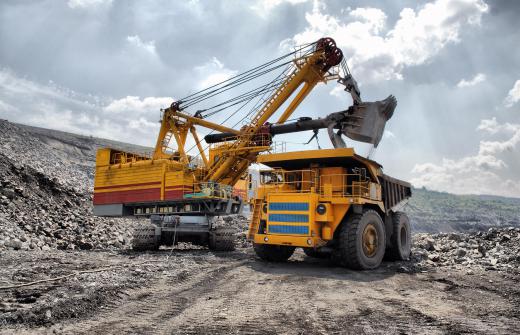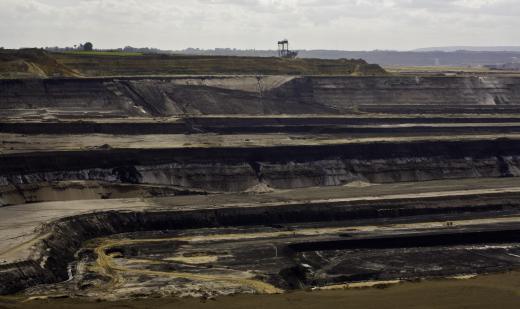A mining shovel is a specialized piece of heavy excavating equipment typically used to scoop ore, overburden, coal, or sand in strip mining. These have been in use since the late 1800s. When they were first built, they were powered by steam. As fuel technology progressed, they became powered either by diesel fuel or electricity. They also have other uses besides mining. Some of these are moving massive amounts of earth for canal, dam, railroad, or road construction.
There are two basic kinds of mining shovels — the dragline mining shovel and the bucket mining shovel. Bucket shovels usually move on tracks, similar to a tank or track hoe, but draglines often use special walking feet or pontoons to move because of their weight. Draglines generally cannot move very far very fast. If they do need to move over a longer distance, special carriers have been constructed to transport them.

Another difference between these two pieces of heavy equipment is their digging motion. The bucket mining shovel generally has a heavy boom supporting its bucket and cuts ground outwardly from itself. The dragline has a flexible, rope-controlled bucket that cuts the ground toward itself. A dragline is often set on top of a worksite, working downward, while a bucket shovel can work upward from the point at which it is positioned.

These machines can move huge quantities of earth. A mining shovel can move as much as 220 cubic yards (168 cubic meters) of earth in one scoop. Quite often, when a mining shovel is used, it is utilized in conjunction with a large dump truck into which the excavated earth is placed, through a bucket release on the shovel. When the dump truck is full, the excavated material can be moved to wherever it is needed.
Dragline mining shovels can have a reach of up to approximately 300 feet (91.44 meters). Since they can have such a long reach, they do not always have to work in conjunction with a dump truck. Sometimes their booms are simply swung to a location for their bucket to be emptied.
The technology used in developing mining shovels has also been used in other applications. When the US National Aeronautic and Space Administration (NASA) wanted a piece of equipment, called a crawler, developed to transport rockets to their launchpads, it was made by one of the companies that make mining shovels, utilizing the same technology.
